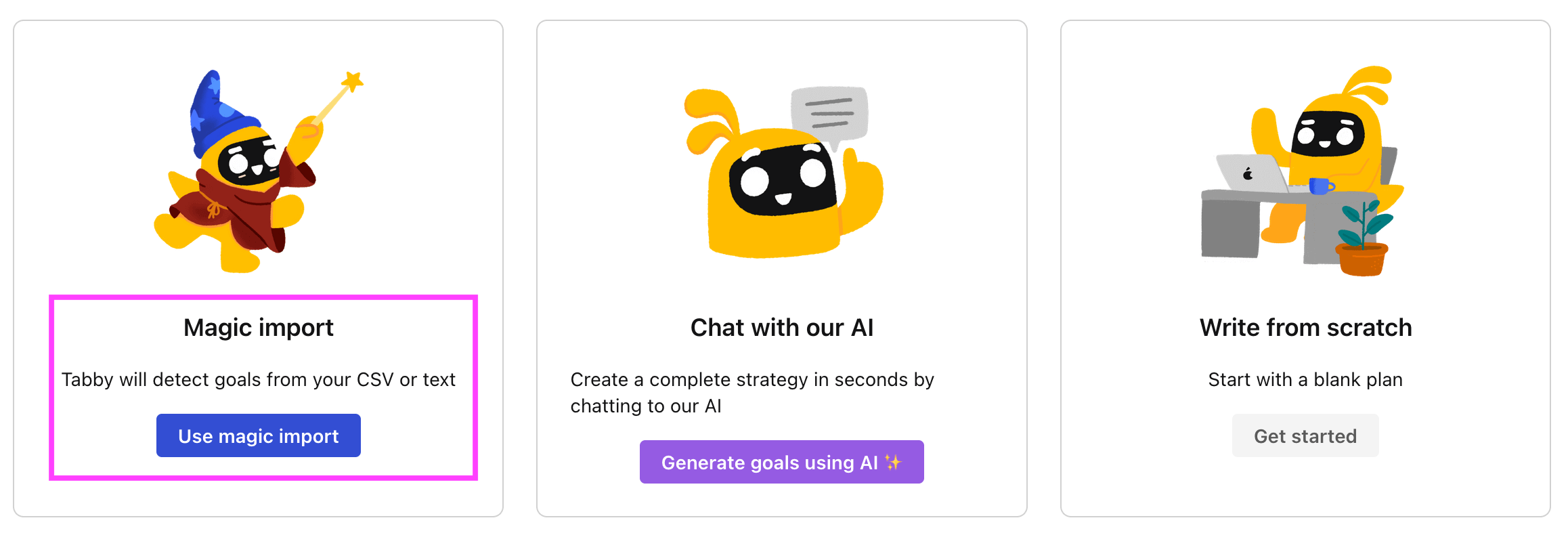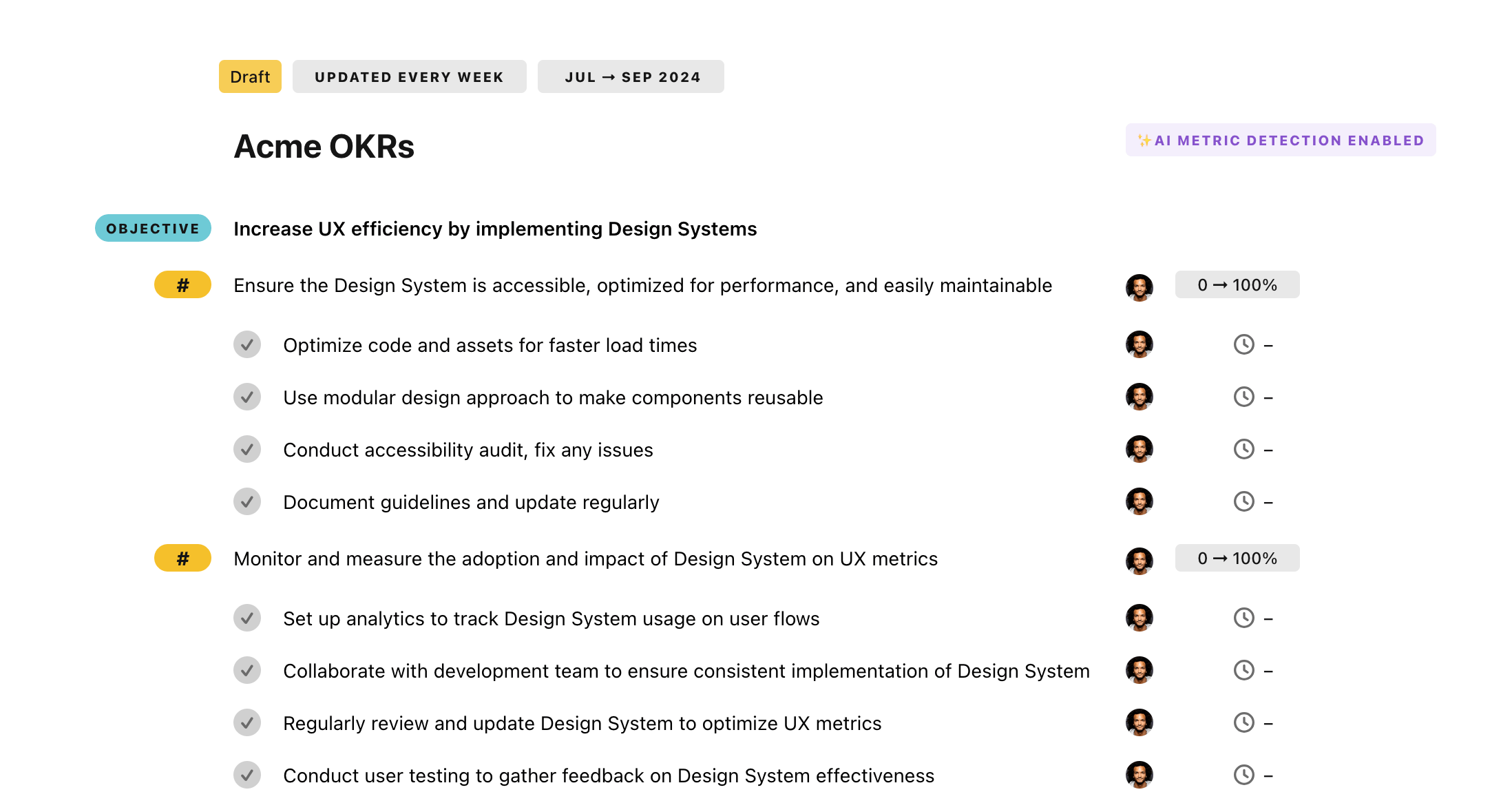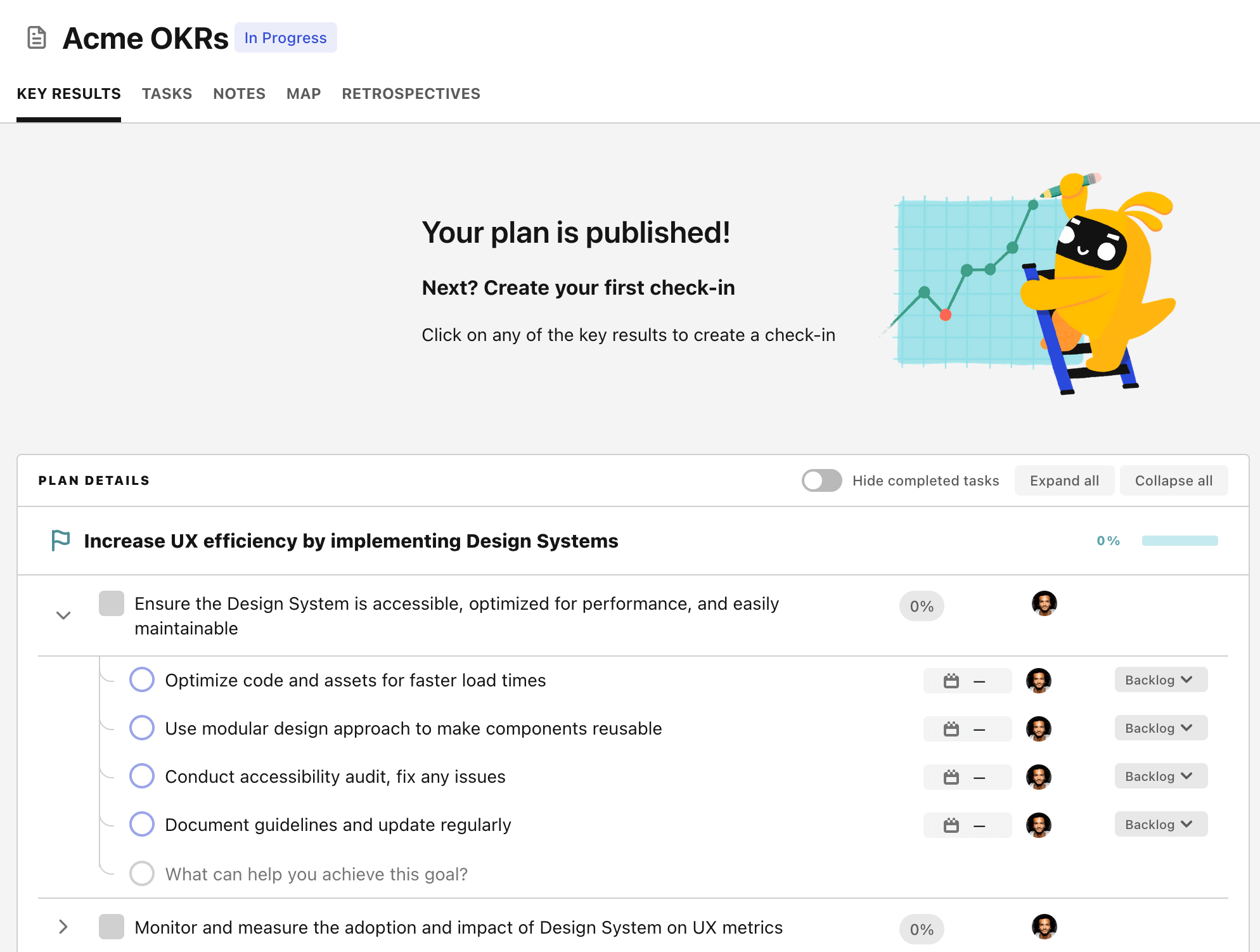OKR template to boost my score to 11000
Your OKR template
Incrementing daily practice time to raise the average score by 20% weekly is another key outcome. One must pencil in an extra half-hour for practice each day, evaluate and alter their study methods every week, and monitor their progress while setting weekly objectives.
A new strategy to be learned and applied every fortnight to gain points is the third outcome of this OKR. Here, understanding each chosen strategy is crucial. The gamer must implement the strategy within games to gain points and identify a new strategy every two weeks.
The OKR revolves around increasing the gamer's score to 11000 through active participation, increased practice, methodical strategy implementation, and constant performance monitoring. By registering in games ideal for their skill level, one should be able to reach their score objective efficiently.
ObjectiveBoost my score to 11000
KRParticipate in at least 5 competitive games to earn additional scores
Identify 5 competitive games suitable for your skill level
Register and participate in the chosen games
Allocate specific hours for dedicated practice sessions
KRIncrease daily practice time to improve average score by 20% each week
Schedule an additional 30 minutes of practice daily
Assess and adjust study methods weekly
Track progress and set weekly goals
KRLearn and implement one new strategic move each fortnight to gain scores
Study and understand the chosen strategy
Implement the strategy in the game to gain scores
Identify one new strategic move each fortnight
How to edit and track OKRs with Tability
You'll probably want to edit the examples in this post, and Tability is the perfect tool for it.
Tability is an AI-powered platform that helps teams set better goals, monitor execution, and get help to achieve their objectives faster.
With Tability you can:
- Use AI to draft a complete set of OKRs in seconds
- Connect your OKRs and team goals to your project
- Automate reporting with integrations and built-in dashboard
Instead of having to copy the content of the OKR examples in a doc or spreadsheet, you can use Tability’s magic importer to start using any of the examples in this page.
The import process can be done in seconds, allowing you to edit OKRs directly in a platform that knows how to manage and track goals.
Step 1. Sign up for a free Tability account
Go tohttps://tability.app/signup and create your account (it's free!)
Step 2. Create a plan
Follow the steps after your onboarding to create your first plan, you should get to a page that looks like the picture below.

Step 3. Use the magic importer
Click on Use magic import to open up the Magic Import modal.
Now, go back to the OKR examples, and click on Copy on the example that you’d like to use.

Paste the content in the text import section. Don’t worry about the formatting, Tability’s AI will be able to parse it!

Now, just click on Import from text and let the magic happen.

Once your example is in the plan editor, you will be able to:
- Edit the objectives, key results, and tasks
- Click on the target 0 → 100% to set better target
- Use the tips and the AI to refine your goals
Step 4. Publish your plan
Once you’re done editing, you can publish your plan to switch to the goal-tracking mode.

From there you will have access to all the features that will help you and your team save hours with OKR reporting.
- 10+ built-in dashboards to visualise progress on your goals
- Weekly reminders, data connectors, and smart notifications
- 9 views to map OKRs to strategic projects
- Strategy map to align teams at scale